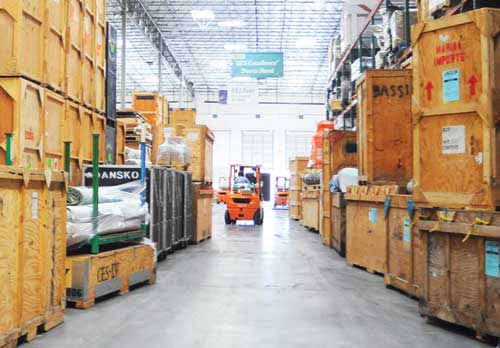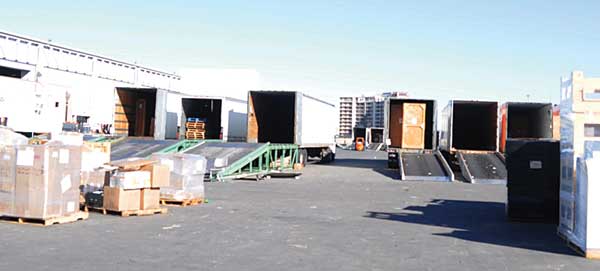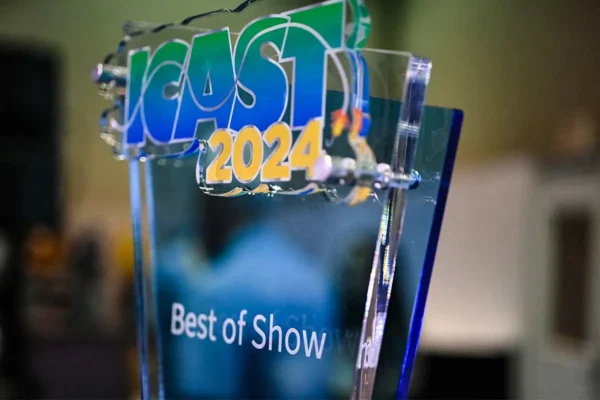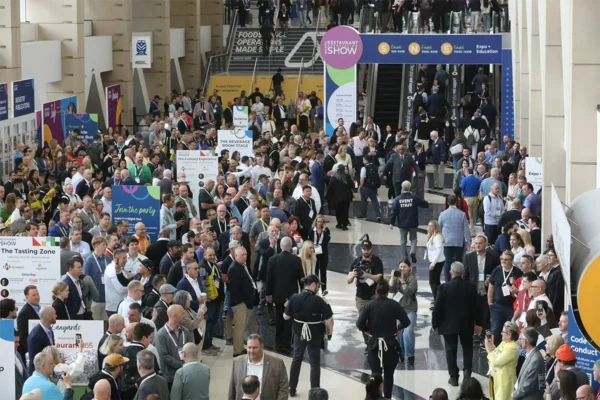Getting exhibits to tradeshow venues is not a simple proposition and can result in high costs if loads do not arrive when exhibitors are scheduled to setup their displays. With strict timelines in place for tradeshow installs, timely arrival is a big part of the battle. And knowing where an exhibit is during transport can help exhibitors know if their loads will arrive on time.
“If a shipment doesn’t arrive on time, then the show manager is not going to wait to open the show floor when your carrier decides to deliver your exhibit,” said David Mihalik, CEO, ELITeXPO Cargo Systems. “Mistakes here cost real money. Our customers know that there is no tomorrow in the tradeshow world. We live and die by that creed.”
Choosing a carrier who has industry experience can help ensure loads arrive on time, especially in the age of modern technology.
“In the electronic age, it is vital that the carrier you select has industry experience,” said Drey Lucibello, CEO, Champion Logistics. “Anyone can broker loads from the basement of their home with a personal computer and an attractive website. Get to know your vendors and interview them with the tough questions. You may find that they have little experience, or worse, zero liability when it comes to the timely and safe delivery of your products.”
Although potentially costly, the advent of radio frequency identification (RFID) tags can help exhibitors know precisely where their precious cargo is at any given time. They also can help streamline transportation methods.
“Technologically speaking, the use of RFID tags and tracing ability does enhance your ability to see all steps of the transport process and can certainly aid in determining where discrepancies are at,” said Greg Keh, vice president, TWI Group.
RFID tags come in a wide variety and range in price from a few pennies to more than $100 each and do not require a direct line of sight to be read. The small objects are about the size of a grain of rice and transmit data via radio waves, and some have no batteries or power source, relying instead on the electromagnetic fields to provide power. The RFID tags can be read from several feet away, making it quick and easy to determine where and when an item is during shipping.
Tags generally are purchased in bulk when preparing a shipment to a tradeshow or other event and usually cost about $25 each, according to the RFID Journal. Although initially costly, some high-end RFID tags can be reprogrammed thousands of times, making each single use much more affordable over the long run with costs that can dip below a penny per use.
“Let’s face it – the tradeshow floor is probably the most inefficient space where freight moves in and out,” said Mihalik. “A company that manages the efforts of its drivers by timing them with a stopwatch when they leave the package truck until they get back into the truck finds that the pace on the show floor is not sensitive to the flow of work a driver must maintain in order to make that business model profitable.
“That’s where tradeshow-exclusive companies can utilize the strong components of one method of carriage along with the many years of tradeshow experience to manage the delivery and pickup of exhibition materials in an efficient manner. And in our world, that means on time and intact. It’s a delicate balance that requires a detailed, hands-on approach.”
While experienced drivers and tracking technology can help protect loads while increasing transportation efficiency, sustained high fuel costs have had some unforeseen effects on the tradeshow shipping industry.
“From a transportation perspective, fuel prices have further aggravated the driver shortage
problem,” said Pete Morgan, owner, Time Logistics. “As baby boomers get closer to retirement, many of the older, high-quality show and event drivers are less likely to continue fronting the required cost of fuel by the van lines.”
As a result, Time Logistics created a tradeshow training program where drivers interact with logistics coordinators who rely on their experience for shipments to the show floor. Drivers also receive fuel allowances as part of the program.
Exhibit transportation can sometimes be an afterthought unless something goes wrong. But with tight windows for shipments to hit the show floor, it pays to take the time to make sure the trip from point A to point B goes a smoothly as possible.
“While the freight costs may be a minor part of the overall tradeshow budget, nothing impacts the success or failure of an event as much as a mistake made during shipping,” said Mihalik.































